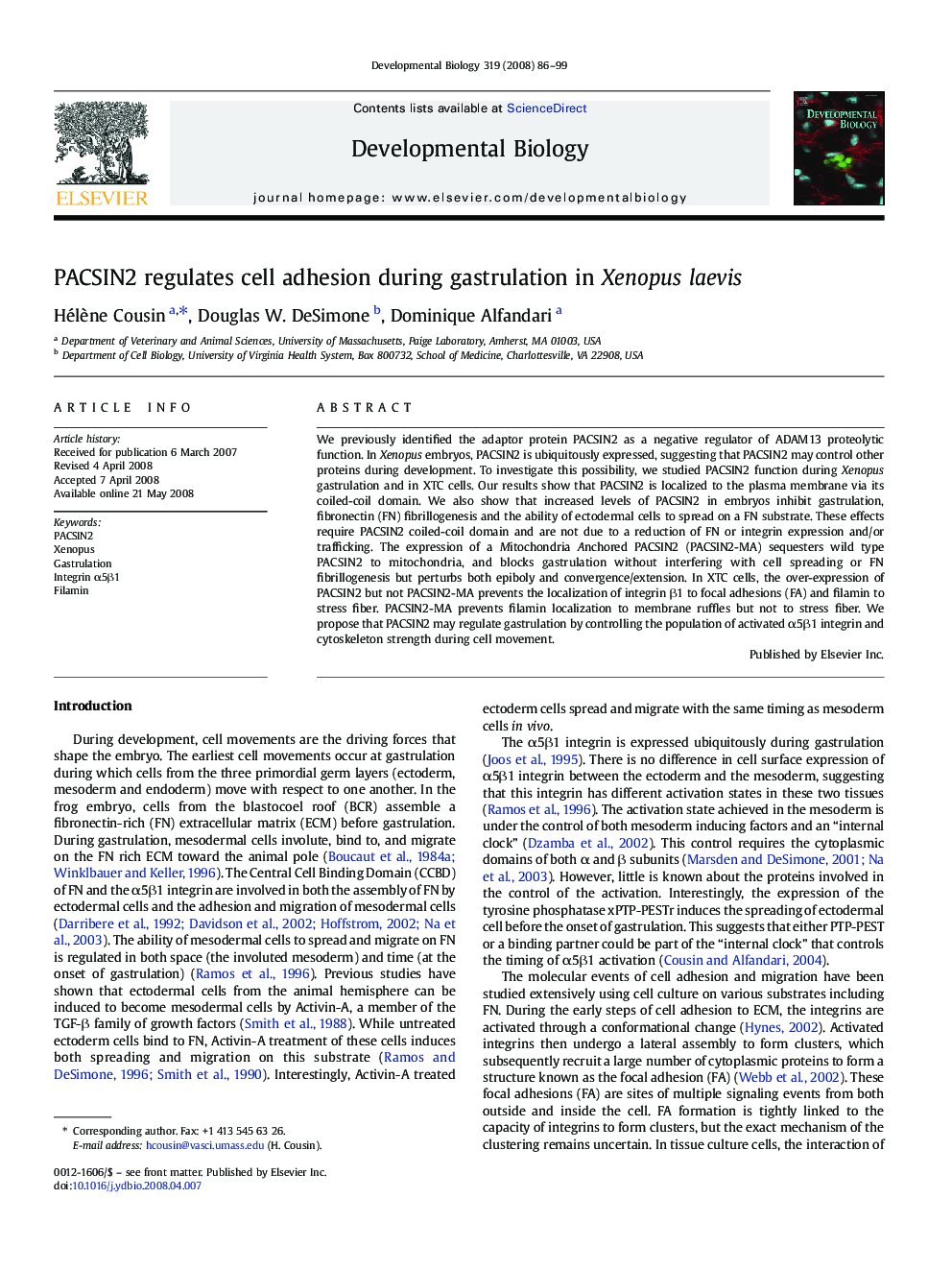| Article ID | Journal | Published Year | Pages | File Type |
|---|---|---|---|---|
| 2174737 | Developmental Biology | 2008 | 14 Pages |
We previously identified the adaptor protein PACSIN2 as a negative regulator of ADAM13 proteolytic function. In Xenopus embryos, PACSIN2 is ubiquitously expressed, suggesting that PACSIN2 may control other proteins during development. To investigate this possibility, we studied PACSIN2 function during Xenopus gastrulation and in XTC cells. Our results show that PACSIN2 is localized to the plasma membrane via its coiled-coil domain. We also show that increased levels of PACSIN2 in embryos inhibit gastrulation, fibronectin (FN) fibrillogenesis and the ability of ectodermal cells to spread on a FN substrate. These effects require PACSIN2 coiled-coil domain and are not due to a reduction of FN or integrin expression and/or trafficking. The expression of a Mitochondria Anchored PACSIN2 (PACSIN2-MA) sequesters wild type PACSIN2 to mitochondria, and blocks gastrulation without interfering with cell spreading or FN fibrillogenesis but perturbs both epiboly and convergence/extension. In XTC cells, the over-expression of PACSIN2 but not PACSIN2-MA prevents the localization of integrin β1 to focal adhesions (FA) and filamin to stress fiber. PACSIN2-MA prevents filamin localization to membrane ruffles but not to stress fiber. We propose that PACSIN2 may regulate gastrulation by controlling the population of activated α5β1 integrin and cytoskeleton strength during cell movement.
